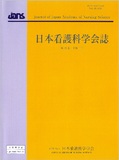Japanese
English
- 販売していません
- Abstract 文献概要
- 参考文献 Reference
要旨
目的:避難行動要支援者の属性と身体状態を把握し,医療機器ユーザーに必要な発電機・燃料の備蓄想定,GISにより津波や河川氾濫時の浸水・土砂災害からの被災リスクを明らかにする.
方法:内灘町の要支援者25人を対象に,K-DiPSアプリを用いた実証実験を実施した.要支援者と担当ケアマネがアプリに心身状態を入力して把握し,発災後72時間のバックアップ電源を算出した.GISで,土砂災害・浸水リスクを検討した.
結果:2人が医療機器を必要とし,個々に1台の発電機と燃料が必要だった.ID28の避難所は土砂災害警戒区域に立地していた.A地区の居住者は5分以内に避難所まで到達できないと想定された.
結論:2人に電源備蓄が必要である.ID28は浸水想定内への立地のため,避難所としての使用には,慎重な検討が必要である.A地区の要支援者は,降雨時にはより早期の避難が必要である.
Purpose: We aimed to identify those populations vulnerable to disasters (PVD) in Uchinada town in K-DiPS app demonstration experiments and to clarify the risk of disasters using geographic information systems (GIS).
Methods: Care managers conducted interviews with PVD using the K-DiPS app. We determined the disease status of PVD and calculated the number of generators and fuel needed to run necessary medical devices for 72 hours. We used GIS to identify PVD and risks of tsunami, flood, and landslide damage.
Result: Two people needed medical equipment, each requiring one generator, 88 cassette cylinders, and one liter of oil. The ID28 shelter is in an area at risk of landslide damage. PVD in Area A were assumed to be unable to reach the shelter within 5 minutes.
Conclusion: Careful consideration should be given to using ID28 shelters during heavy rains and earthquakes. PVD living in Area A must be evacuated early during heavy rainfall events.
Copyright © 2020, Japan Academy of Nursing Science. All rights reserved.


